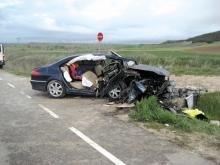The
Romania has Europe’s most dangerous roads with around 105 people/million of urban population being killed/year in road crashes. At the other end of the scale, around 9 people/million of urban population are killed in road crashes in Sweden and around 11/million of urban population in the UK are killed in road crashes.
Latvia, Greece, Portugal and Poland have had the greatest success in the EU countries in reducing urban road deaths between 2010 and 2017, according to ETSC data.
New risk factors are also coming to light as new forms of transport rise to the fore. There is widespread concern over the increasing use of electric scooters. Meanwhile there is also recognition that better cycling facilities will help lower casualties, while reducing urban congestion and traffic pollution, and improving public health.
The report contains over 20 main recommendations for action at EU, country and city authority level and can be downloaded from the ETSC website at: %$Linker:
The report shows that road deaths on urban roads decreased, on average, by 2.2% each year between 2010 and 2017, compared to 3.9% on rural roads.
Pedestrians faced the highest casualty rate on Europe’s urban roads for the 2010-2017 period, accounting for 40% of those killed and 25% of those seriously injured. Motorcyclists accounted for 18% of those killed and 22% of those seriously injured for the period. Meanwhile cyclists accounted for 12% of those killed and 23% of those seriously injured during the period.
Europe’s roads are safer, but concerns continue
New data shows that Europe’s rural roads have seen a major improvement in safety levels. For the 2010 to 2017 period, road deaths on rural roads decreased more quickly than those for urban roads. Urban road safety is now becoming a key concern. Of particular concern for urban traffic is the high casualty rate amongst vulnerable road users (VRUs), which represent around 70% of those being killed. Pedestrians, cyclists and motorcyclists still face unacceptably high risks of being killed or seriously injured o
New data shows that Europe’s rural roads have seen a major improvement in safety levels. For the 2010 to 2017 period, road deaths on rural roads decreased more quickly than those for urban roads. Urban road safety is now becoming a key concern. Of particular concern for urban traffic is the high casualty rate amongst vulnerable road users (VRUs), which represent around 70% of those being killed. Pedestrians, cyclists and motorcyclists still face unacceptably high risks of being killed or seriously injured on Europe’s urban roads.






